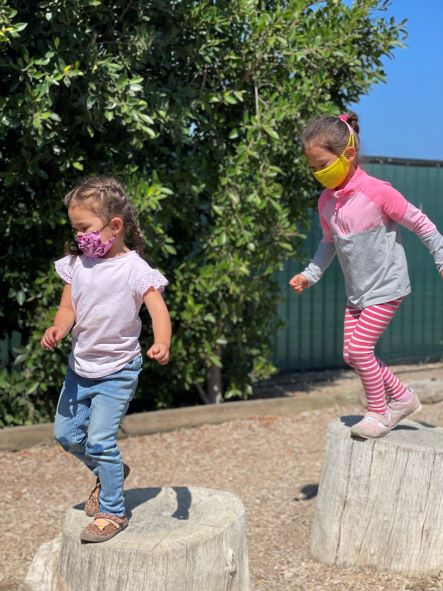(858) 759-0631
We are so fortunate to live in Southern California where the weather predominantly stays beautiful all year round, allowing us to enjoy outdoor activities with our little ones. Nevertheless, with our generation of today, technology has also become a bigger part of our society. Computers, TVs, video games, and such are so popular nowadays that why bother letting the children play outside with sticks and explore nature. Why let them touch the soil and get dirty when they can use their leapfrog or your iPhones/iPad/computer at home and have fun, right?
Have you heard of the biophilia hypothesis? Last year, I've been fortunate to come across a screening of a brilliant film entitled, 'Mother Nature's Child.' (http://www.mothernaturesmovie.com/) It spoke about the relationship of the child with nature and its importance in the development of human beings. The term "biophilia" literally means "love of life or living systems." It was first used by Erich Fromm to describe a psychological orientation of being attracted to all that is alive and vital. Edward O. Wilson uses the term in the same sense when he suggests that biophilia describes "the connections that human beings subconsciously seek with the rest of life.” He proposed the possibility that the deep affiliations humans have with nature are rooted in our biology. Unlike phobias, which are the aversions and fears that people have of things in the natural world, philias are the attractions and positive feelings that people have toward certain habitats, activities, and objects in their natural surroundings.
The human organism is based on nature yet we are gradually detaching from nature because of the world which we live in today. We seem to focus our energy on things that are man-made and are very attracted to them. There is nothing wrong with technology and it is a huge part of our lifestyle, however, we must find a good balance between the two. Maria Montessori says, '... if for the physical life it is necessary to have the child exposed to the vivifying forces of nature, it is also necessary for his physical life to place the soul of the child in contact with creation....' When the child is in one with nature, he has a sense of wonder which not only creates peace within himself but that he will also develop a form of love with his world and the universe as a whole. He is present to life and is compassionate. He knows how to be calm, quiet, and still. More so, Rachel Carson, an American marine biologist and conservationist whose writings are credited with advancing the global environmental movement, stated that 'if the child is to keep alive his inborn sense of wonder, he needs the companionship of at least one adult who can share it, rediscovering with him the joy, excitement, and mystery of the world we live in.' It is our responsibility as adults to make sure that the children are in contact with nature.
I remember growing up in Japan, where, as most of you know, technology has always been advanced. I am an only child and as you can imagine, my parents gave me every new electronic toy which became available; game boy, play station and so forth. On the other hand, they've always sent me to camps and summer programs during the two and a half months I was off for school every year. The fondest memories I have are not about the amazing toys I've had but the time I've spent exploring the woods, building campfires, learning how to cook outside, building tents, riding trains, singing songs, and most of all making friends with children that are from the different parts of the world. To this day, I think of those times and smile. Children remember what they've experienced and what they've discovered. Toys and other materials are used and mostly forgotten. It is very important for us to understand the relationship which the children have with nature and it is us, adults, who can help protect and support that. I am sure all of you have a story you carry with you that is connected with nature and not what you've seen on the screen or achieved in-game technology.
Maria Montessori believed that nature talks directly to children. Here are a few things you can do with them.
- Go for walks at a park, in the woods, at the beach.
- Collect pine cones, leaves, seeds, shells, and so on
- draw pictures of birds, other animals, plants, clouds, and anything else which you may have observed.
- Encourage the children to closely observe insects or animals in the wild.
- Growing plants from seeds or sprouts, taking care of the garden or yard
In addition, here are some organizations, which I believe are all San Diego-based, that offer family activities involving nature. Please check them out.
There is also a wonderful book by Richard Louv called The Last Child In the Wood that I strongly suggest for reading.
-Miss Vicki, Bumblebee Teacher

